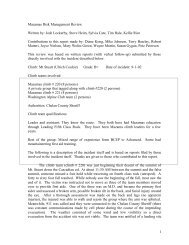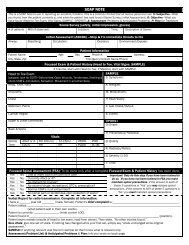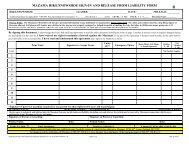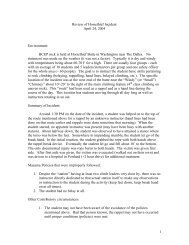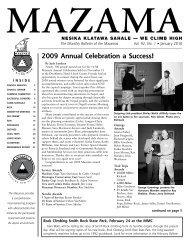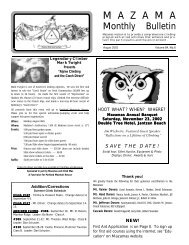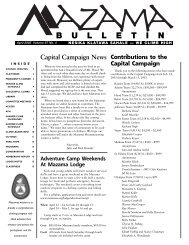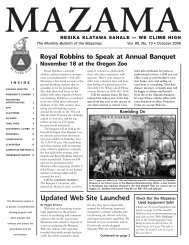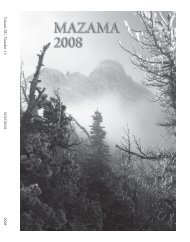Mazamas Wilderness Navigation class handouts
Mazamas Wilderness Navigation class handouts
Mazamas Wilderness Navigation class handouts
Create successful ePaper yourself
Turn your PDF publications into a flip-book with our unique Google optimized e-Paper software.
Contours<br />
Developing the ability to look at a topo map and visualize the real terrain that it represents is a key longterm<br />
skill to develop in navigation. Shaded relief makes this a LOT easier! (The above images were<br />
made from Gmap4 free software.)<br />
Contour interval = the real world vertical distance represented by each contour line. This is typically 40<br />
feet on a large-scale map.<br />
Index contour = typically every fifth line, printed in bold, which has an elevation value printed<br />
somewhere on it. This is typically 200 feet on a large-scale map.<br />
Widely spaced lines indicate a gentle slope. Closely spaced lines show a steeper slope. Contour lines that<br />
touch one another represent a cliff!<br />
Concentric circles show a summit.<br />
Spurs (ridges) and gullies (valleys) look almost identical. Learning to differentiate between them is an<br />
important map reading skill. Here's the main tip: Spurs have contours that bend downhill. Gullies<br />
have contours that bend uphill. (Tip: streams always run in gullies, and never on ridges =^)<br />
```````````````````````````````````````````````````````````````````````````````````````````````````````````````````````````<br />
Coordinate systems<br />
Coordinate systems, aka grids, let you to specify a “street address” of any point on Earth.<br />
4



